50 years ago - on October 9th, 1958 - Pope Pius XII died at the papal summer residence Castel Gandolfo aged 82. With his death an era in the history of the papacy and the Catholic Church ended, and he is rightly seen as the last of the 'traditional' Popes.
 Born in Rome on March 2nd, 1876 as Eugenio Maria Giuseppe Giovanni Pacelli, he came from a wealthy aristocratic family with very close ties to the Vatican.
Born in Rome on March 2nd, 1876 as Eugenio Maria Giuseppe Giovanni Pacelli, he came from a wealthy aristocratic family with very close ties to the Vatican.
Marcantonio Pacelli, his grandfather, was Under-Secretary in the Ministry of Finances and then the Papal Secretary of the Interior under Pope Pius IX from 1851 to 1870.
He also was the founder of L'Osservatore Romano, the Vatican's newspaper, in 1861.
Eugenio's cousin, Ernesto Pacelli, was a key financial advisor to Pope Leo XIII; his father, Filippo Pacelli, a Franciscan Tertiary, was the dean of the Sacra Rota Romana; and his brother, Francisco Pacelli, became a lay canon lawyer and the legal advisor to Pope Pius XI, in which role he negotiated the Lateran Treaty in 1929, bringing an end to the 'Roman Question'.
At the age of twelve, Eugenio announced his intentions to enter the priesthood instead of becoming a lawyer.
After completing state primary school, he received his secondary classical education at the Visconti Institute, which was dominated by an anti-Catholic atmosphere popular at that time.
In 1894, at the age of eighteen, he entered the Collegio Capranica seminary to begin studying for the priesthood and enrolled at the Pontifical Gregorian University and the Appolinare Institute of the Lateran University. From 1895 to 1896 he studied Philosophy at the University of Rome La Sapienza. In 1899 he received degrees in Theology and in utroque iure (civil and canon law). At the seminary, he received a special dispensation to live at home for health reasons.
Eugenio Pacelli was ordained a priest on Easter Sunday, April 2nd, 1899 by Bishop Francesco di Paola Cassetta - the vice-regent of Rome and a family friend - and received his first assignment as a curate at Chiesa Nuova, where he had served at mass as an altar boy.
In 1901 he entered the Congregation for Extraordinary Ecclesiastical Affairs, a sub-office of the Vatican Secretariat of State, where he became a minutante at the recommendation of Cardinal Vannutelli, another family friend.
In 1904 Pacelli became a papal chamberlain and in 1905 - at the tender age of 29 - a domestic prelate. From 1904 until 1916 he assisted Cardinal Pietro Gasparri in his codification of canon law with the Department of Extraordinary Ecclesiastical Affairs.
In 1908 and 1911 Pacelli turned down professorships in canon law at a Roman university and The Catholic University of America, respectively.
He became the under-secretary in 1911, adjunct-secretary in 1912 (a position he received under Pope Pius X and retained under Pope Benedict XV) and secretary of the Department of Extraordinary Ecclesiastical Affairs in 1914, succeeding Cardinal Gasparri, who was promoted to Cardinal Secretary of State.
As secretary he concluded a concordat with Serbia, just four days before Archduke Franz Ferdinand of Austria was assassinated in Sarajevo.
During World War I Pacelli maintained the Vatican's registry of prisoners of war. In 1915 he travelled to Vienna to assist Monsignor Scapinelli, the apostolic nuncio to Austria-Hungary, in his negotiations with Emperor Franz Joseph regarding Italy.
Pope Benedict XV appointed Pacelli as papal nuncio to Bavaria on April 23rd, 1917, consecrating him as titular Bishop of Sardis and immediately elevating him to archbishop in the Sistine Chapel on May 13th, 1917, the very day Our Lady of Fatima is believed to have first appeared to three shepherd children in Portugal.
As there was no nuncio to Prussia or Germany at the time, Pacelli was, for all practical purposes, the nuncio to all of the German Empire. Once in Munich, he conveyed a papal initiative to end the war to German authorities.
After the war, during the short-lived Bavarian Soviet Republic in 1919, Pacelli was one of the few foreign diplomats to remain in Munich.
In 1920 archbishop Pacelli was appointed nuncio to Germany, and after completion of a concordat with Bavaria the nunciature was moved to Berlin in 1925.
 There he was doyen of the Diplomatic Corps and active in diplomatic and many social activities.
There he was doyen of the Diplomatic Corps and active in diplomatic and many social activities.
He met many interesting and influential people, including Albert Einstein, Gustav Stresemann, Adolf v. Harnack, Clemens August Graf von Galen and Konrad von Preysing. (The latter two he would elevate to cardinals in 1946.)
He also worked closely with the German priest Ludwig Kaas, who was known for his expertise in Church-State relations and was politically active in the predominantly Catholic German Centrum Party.
While in Germany, he enjoyed working as a pastor, travelling to all regions, attending the Katholikentag (national gathering of the faithful) and delivered more than 50 sermons and speeches to the German people.
Nuncio Pacelli worked mainly on clarifying the relations between Church and State. In the absence of a papal nuncio to Moscow, he also worked on diplomatic arrangements between the Vatican and the Soviet Union. He negotiated food shipments for Russia, where the Church was persecuted. He met with Soviet representatives including Foreign Minister Georgi Chicherin, who rejected any kind of religious education, but offered agreements without the points vital to the Vatican. Despite Vatican pessimism and a lack of visible progress, Pacelli continued the secret negotiations until Pope Pius XI ordered them to be discontinued in 1927.
When he returned to Rome in 1929, praise was heaped by Catholics and Protestants alike on Pacelli, who by now had become more popular than any German cardinal or bishop, which he had largely excluded from his negotiations and dealings with the German government.
On December 16th, 1929 Eugenio Pacelli was made a cardinal by Pope Pius XI. Within a few months, on February 7th, 1930, Pius XI appointed him Cardinal Secretary of State and five years later he was also named Camerlengo (administrator of the property and revenues of the Holy See).
Secretary of State Pacelli signed concordats with a number of countries and states, including Baden (1932), Austria and Germany (1933), Yugoslavia (1935) and Portugal (1940). The Lateran treaties with Italy (1929) were concluded before his appointment.
Concordats allow the Church to organise youth groups, make ecclesiastical appointments, run schools, hospitals and charities, or conduct religious services. They also ensured that canon law would be recognised within some spheres (e.g. church decrees of nullity in the area of marriage).
He made many diplomatic visits throughout Europe and the Americas, including an extensive visit to the United States in 1936 where he met with President Franklin D. Roosevelt, who appointed a personal envoy to the Holy See in December 1939, re-establishing a diplomatic tradition that had been broken since 1870, when the Pope lost temporal power.
Cardinal Eugenio Pacelli also presided as Papal Legate over the International Eucharistic Congresses in Buenos Aires in October 1934, and in Budapest in May 1938.
Pope Pius XI died on February 10th, 1939. Several historians interpret the conclave to choose his successor as facing a choice between a diplomat or a spiritual candidate, and they view that Pacelli's diplomatic experience, especially with Germany, as one of the deciding factors for his election on March 2nd, 1939, his 63rd birthday. The conclave lasted only one day, and there were just three ballots.
Eugenio Pacelli was the first Cardinal Secretary of State to be elected Pope since Clement IX in 1667. He was also one of only two men known to have served as Camerlengo immediately prior to being elected as Pope (the other being Pope Leo XIII).
Pacelli took the same papal name as his predecessor, and was quoted saying: "I call myself Pius; my whole life was under Popes with this name, but especially as a sign of gratitude towards Pius XI."
After his election, Pius XII listed three objectives as pontiff:
The first occasion on February 18th, 1946 - which is known as the 'Grand Consistory' - brought the elevation of a record 32 new cardinals, almost 50% of the Sacred College, and reaching the canonical limit of 70 cardinals.
While maintaining the maximum size, Pius XII named cardinals from China, India and the Middle East, also increasing the number of cardinals from the Americas. Thus he lessened the Italian influence on the Church. The two consistories of 1946 and 1953 brought in fact an end to over 500 years of Italians constituting a clear majority in the College of Cardinals.
Pius XII explained the Catholic faith in 41 encyclicals and almost 1000 messages and speeches during his long pontificate.
Mediator Dei clarified membership and participation in the Church. The encyclical Divino Afflante Spiritu opened the doors for biblical research. But his magisterium was far larger and is difficult to summarise. In numerous speeches Catholic teaching is related to various aspects of life, education, medicine, politics, war and peace, the life of saints, Mary, things eternal and contemporary. Theologically Pius XII specified the nature of the teaching authority of the Church, gave a new freedom to engage in theological investigations and canonized numerous saints, including Pope Pius X and Maria Goretti.
The pontificate of Pius XII began on the eve of World War II. Earlier, in the 1937 encyclical Mit brennender Sorge, drafted by him when he was still Cardinal Eugenio Pacelli, Pope Pius XI warned Catholics that anti-Semitism is incompatible with Christianity. Read from the pulpits of all German Catholic churches, it described Hitler as an insane and arrogant prophet and was the first official denunciation of Nazism made by any major organization.
During the war, the Pope followed a policy of neutrality, mirroring that of Pope Benedict XV during World War I. In 1939 Pius XII turned the Vatican into a centre of aid which he organised from various parts of the world. An information office for prisoners of war and refugees operated in the Vatican under Giovanni Battista Montini (later to become Pope Paul VI), which in the years of its existence from 1939 until 1947 received almost 9,891,497 information requests and produced 11,293,511 answers about missing persons.
However, Pius XII has been accused by several historians of having not spoken out against the Nazis in Germany and the Fascists in Italy strongly enough. They also criticised his lack of support for the persecuted Jews in Europe, even though it is well known that the Vatican did whatever was possible under the circumstances.
After the war the Pope focused on material aid to the devastated countries of Europe, an internal internationalisation of the Catholic Church and the development of its worldwide diplomatic relations. Pius XII demanded recognition of local cultures as fully equal to European culture.
Continuing the line of his predecessors, he supported the establishment of local administration in Church affairs.
In 1950 the hierarchy of Western Africa became independent, in 1951 Southern Africa and in 1953 British Eastern Africa. Finland, Burma and French Africa became independent dioceses in 1955.
The last years of the pontificate began in late 1954 with a long illness, during which Pius XII considered resignation. Afterwards changes in his work habit became noticeable. The Pope avoided long ceremonies, canonisations and consistories and displayed hesitancy in personnel matters.
Pius XII often elevated young priests to bishops, and one of his last appointees in 1958 was a 38-year-old Polish priest named Karol Wojtyla (who would later become Pope John Paul II).
After the death of Pius XII in October 1958 the conclave would have liked to elect Giovanni Battista Montini as his successor. But as he was not a cardinal (yet), that was not possible. So the Sacred College chose a compromise candidate, a gentle 77-year-old Italian cardinal who would not have many years left to reign and to whom the elevation to the papacy came as a huge surprise.
His name was Angelo Giuseppe Roncalli, and he was not expected to do more than hold the Holy See warm for Monsignor Montini (who was made a cardinal by him in December 1958).
However, the Curia was in for a series of surprises. First Roncalli, who had been Patriarch of Venice for the previous five years, did not take as his papal name Pius XIII, but John XXIII, thus signalling a clear break with the line before him.
And then he announced his intention to reform the Church and called the Second Vatican Council. The rest is history and well-known, and no Pope since was able to turn back the tide of change.
Today it would be unthinkable for any Roman pontiff - including the present Pope Benedict XVI, whom many see as conservative - to return to the structures and policies of Pius XII. He was indeed the last of the traditional and aristocratic pontiffs, and with him the old Roman concept of Theology, hierarchy and control died.
Pius XII's cause of canonisation was opened on November 18th, 1965 by Pope Paul VI and on September 2nd, 2000 - during the pontificate of John Paul II - Pius XII was given the title Venerable. There is a strong fraction in the Vatican that wants to see him as a saint, and the signs are not bad at present.
A special conference of scholars on Pius XII was held in Rome from September 15th to 17th by the Paving the Way Foundation. On September 19th Pope Benedict XVI held a reception for the participants and praised Pius XII as a Pope who "made every effort to save Jews during the war".
A second conference, to be held by the Pontifical Academy of Life, is scheduled for November 6th to 8th.
Yesterday, on the 50th anniversary of Pius' death, Pope Benedict XVI celebrated pontifical mass in his memory.
Shortly prior to, and after the mass, dialectics continued between the Jewish hierarchy and the Vatican, as Rabbi Shear Yeshuv Cohen of Haifa addressed the Synod of Bishops and expressed his disappointment towards Pius XII's "silence" during the war. But even though the bishops were listening, I doubt that the Vatican is yet taking serious advice from a Rabbi.
The Emerald Islander
 Born in Rome on March 2nd, 1876 as Eugenio Maria Giuseppe Giovanni Pacelli, he came from a wealthy aristocratic family with very close ties to the Vatican.
Born in Rome on March 2nd, 1876 as Eugenio Maria Giuseppe Giovanni Pacelli, he came from a wealthy aristocratic family with very close ties to the Vatican.Marcantonio Pacelli, his grandfather, was Under-Secretary in the Ministry of Finances and then the Papal Secretary of the Interior under Pope Pius IX from 1851 to 1870.
He also was the founder of L'Osservatore Romano, the Vatican's newspaper, in 1861.
Eugenio's cousin, Ernesto Pacelli, was a key financial advisor to Pope Leo XIII; his father, Filippo Pacelli, a Franciscan Tertiary, was the dean of the Sacra Rota Romana; and his brother, Francisco Pacelli, became a lay canon lawyer and the legal advisor to Pope Pius XI, in which role he negotiated the Lateran Treaty in 1929, bringing an end to the 'Roman Question'.
At the age of twelve, Eugenio announced his intentions to enter the priesthood instead of becoming a lawyer.
After completing state primary school, he received his secondary classical education at the Visconti Institute, which was dominated by an anti-Catholic atmosphere popular at that time.
In 1894, at the age of eighteen, he entered the Collegio Capranica seminary to begin studying for the priesthood and enrolled at the Pontifical Gregorian University and the Appolinare Institute of the Lateran University. From 1895 to 1896 he studied Philosophy at the University of Rome La Sapienza. In 1899 he received degrees in Theology and in utroque iure (civil and canon law). At the seminary, he received a special dispensation to live at home for health reasons.
Eugenio Pacelli was ordained a priest on Easter Sunday, April 2nd, 1899 by Bishop Francesco di Paola Cassetta - the vice-regent of Rome and a family friend - and received his first assignment as a curate at Chiesa Nuova, where he had served at mass as an altar boy.
In 1901 he entered the Congregation for Extraordinary Ecclesiastical Affairs, a sub-office of the Vatican Secretariat of State, where he became a minutante at the recommendation of Cardinal Vannutelli, another family friend.
In 1904 Pacelli became a papal chamberlain and in 1905 - at the tender age of 29 - a domestic prelate. From 1904 until 1916 he assisted Cardinal Pietro Gasparri in his codification of canon law with the Department of Extraordinary Ecclesiastical Affairs.
In 1908 and 1911 Pacelli turned down professorships in canon law at a Roman university and The Catholic University of America, respectively.
He became the under-secretary in 1911, adjunct-secretary in 1912 (a position he received under Pope Pius X and retained under Pope Benedict XV) and secretary of the Department of Extraordinary Ecclesiastical Affairs in 1914, succeeding Cardinal Gasparri, who was promoted to Cardinal Secretary of State.
As secretary he concluded a concordat with Serbia, just four days before Archduke Franz Ferdinand of Austria was assassinated in Sarajevo.
During World War I Pacelli maintained the Vatican's registry of prisoners of war. In 1915 he travelled to Vienna to assist Monsignor Scapinelli, the apostolic nuncio to Austria-Hungary, in his negotiations with Emperor Franz Joseph regarding Italy.
Pope Benedict XV appointed Pacelli as papal nuncio to Bavaria on April 23rd, 1917, consecrating him as titular Bishop of Sardis and immediately elevating him to archbishop in the Sistine Chapel on May 13th, 1917, the very day Our Lady of Fatima is believed to have first appeared to three shepherd children in Portugal.
As there was no nuncio to Prussia or Germany at the time, Pacelli was, for all practical purposes, the nuncio to all of the German Empire. Once in Munich, he conveyed a papal initiative to end the war to German authorities.
After the war, during the short-lived Bavarian Soviet Republic in 1919, Pacelli was one of the few foreign diplomats to remain in Munich.
In 1920 archbishop Pacelli was appointed nuncio to Germany, and after completion of a concordat with Bavaria the nunciature was moved to Berlin in 1925.
 There he was doyen of the Diplomatic Corps and active in diplomatic and many social activities.
There he was doyen of the Diplomatic Corps and active in diplomatic and many social activities.He met many interesting and influential people, including Albert Einstein, Gustav Stresemann, Adolf v. Harnack, Clemens August Graf von Galen and Konrad von Preysing. (The latter two he would elevate to cardinals in 1946.)
He also worked closely with the German priest Ludwig Kaas, who was known for his expertise in Church-State relations and was politically active in the predominantly Catholic German Centrum Party.
While in Germany, he enjoyed working as a pastor, travelling to all regions, attending the Katholikentag (national gathering of the faithful) and delivered more than 50 sermons and speeches to the German people.
Nuncio Pacelli worked mainly on clarifying the relations between Church and State. In the absence of a papal nuncio to Moscow, he also worked on diplomatic arrangements between the Vatican and the Soviet Union. He negotiated food shipments for Russia, where the Church was persecuted. He met with Soviet representatives including Foreign Minister Georgi Chicherin, who rejected any kind of religious education, but offered agreements without the points vital to the Vatican. Despite Vatican pessimism and a lack of visible progress, Pacelli continued the secret negotiations until Pope Pius XI ordered them to be discontinued in 1927.
When he returned to Rome in 1929, praise was heaped by Catholics and Protestants alike on Pacelli, who by now had become more popular than any German cardinal or bishop, which he had largely excluded from his negotiations and dealings with the German government.
On December 16th, 1929 Eugenio Pacelli was made a cardinal by Pope Pius XI. Within a few months, on February 7th, 1930, Pius XI appointed him Cardinal Secretary of State and five years later he was also named Camerlengo (administrator of the property and revenues of the Holy See).
Secretary of State Pacelli signed concordats with a number of countries and states, including Baden (1932), Austria and Germany (1933), Yugoslavia (1935) and Portugal (1940). The Lateran treaties with Italy (1929) were concluded before his appointment.
Concordats allow the Church to organise youth groups, make ecclesiastical appointments, run schools, hospitals and charities, or conduct religious services. They also ensured that canon law would be recognised within some spheres (e.g. church decrees of nullity in the area of marriage).
He made many diplomatic visits throughout Europe and the Americas, including an extensive visit to the United States in 1936 where he met with President Franklin D. Roosevelt, who appointed a personal envoy to the Holy See in December 1939, re-establishing a diplomatic tradition that had been broken since 1870, when the Pope lost temporal power.
Cardinal Eugenio Pacelli also presided as Papal Legate over the International Eucharistic Congresses in Buenos Aires in October 1934, and in Budapest in May 1938.
Pope Pius XI died on February 10th, 1939. Several historians interpret the conclave to choose his successor as facing a choice between a diplomat or a spiritual candidate, and they view that Pacelli's diplomatic experience, especially with Germany, as one of the deciding factors for his election on March 2nd, 1939, his 63rd birthday. The conclave lasted only one day, and there were just three ballots.
Eugenio Pacelli was the first Cardinal Secretary of State to be elected Pope since Clement IX in 1667. He was also one of only two men known to have served as Camerlengo immediately prior to being elected as Pope (the other being Pope Leo XIII).
Pacelli took the same papal name as his predecessor, and was quoted saying: "I call myself Pius; my whole life was under Popes with this name, but especially as a sign of gratitude towards Pius XI."
After his election, Pius XII listed three objectives as pontiff:
- A new translation of the psalms, daily recited by the religious and priests. (It was completed in 1945)
- A definition of the Dogma of the Assumption. This necessitated numerous studies into Church history and consultations with the episcopate worldwide. (The dogma was proclaimed in November 1950)
- Increased archaeological excavations under St. Peter's Basilica in Rome, to determine whether St. Peter was actually buried there, or whether the Church subjected itself for more than 1500 years to a pious hoax. (The first results were published in 1950)
The first occasion on February 18th, 1946 - which is known as the 'Grand Consistory' - brought the elevation of a record 32 new cardinals, almost 50% of the Sacred College, and reaching the canonical limit of 70 cardinals.
While maintaining the maximum size, Pius XII named cardinals from China, India and the Middle East, also increasing the number of cardinals from the Americas. Thus he lessened the Italian influence on the Church. The two consistories of 1946 and 1953 brought in fact an end to over 500 years of Italians constituting a clear majority in the College of Cardinals.
Pius XII explained the Catholic faith in 41 encyclicals and almost 1000 messages and speeches during his long pontificate.
Mediator Dei clarified membership and participation in the Church. The encyclical Divino Afflante Spiritu opened the doors for biblical research. But his magisterium was far larger and is difficult to summarise. In numerous speeches Catholic teaching is related to various aspects of life, education, medicine, politics, war and peace, the life of saints, Mary, things eternal and contemporary. Theologically Pius XII specified the nature of the teaching authority of the Church, gave a new freedom to engage in theological investigations and canonized numerous saints, including Pope Pius X and Maria Goretti.
The pontificate of Pius XII began on the eve of World War II. Earlier, in the 1937 encyclical Mit brennender Sorge, drafted by him when he was still Cardinal Eugenio Pacelli, Pope Pius XI warned Catholics that anti-Semitism is incompatible with Christianity. Read from the pulpits of all German Catholic churches, it described Hitler as an insane and arrogant prophet and was the first official denunciation of Nazism made by any major organization.
During the war, the Pope followed a policy of neutrality, mirroring that of Pope Benedict XV during World War I. In 1939 Pius XII turned the Vatican into a centre of aid which he organised from various parts of the world. An information office for prisoners of war and refugees operated in the Vatican under Giovanni Battista Montini (later to become Pope Paul VI), which in the years of its existence from 1939 until 1947 received almost 9,891,497 information requests and produced 11,293,511 answers about missing persons.
However, Pius XII has been accused by several historians of having not spoken out against the Nazis in Germany and the Fascists in Italy strongly enough. They also criticised his lack of support for the persecuted Jews in Europe, even though it is well known that the Vatican did whatever was possible under the circumstances.
After the war the Pope focused on material aid to the devastated countries of Europe, an internal internationalisation of the Catholic Church and the development of its worldwide diplomatic relations. Pius XII demanded recognition of local cultures as fully equal to European culture.
Continuing the line of his predecessors, he supported the establishment of local administration in Church affairs.
In 1950 the hierarchy of Western Africa became independent, in 1951 Southern Africa and in 1953 British Eastern Africa. Finland, Burma and French Africa became independent dioceses in 1955.
The last years of the pontificate began in late 1954 with a long illness, during which Pius XII considered resignation. Afterwards changes in his work habit became noticeable. The Pope avoided long ceremonies, canonisations and consistories and displayed hesitancy in personnel matters.
Pius XII often elevated young priests to bishops, and one of his last appointees in 1958 was a 38-year-old Polish priest named Karol Wojtyla (who would later become Pope John Paul II).
After the death of Pius XII in October 1958 the conclave would have liked to elect Giovanni Battista Montini as his successor. But as he was not a cardinal (yet), that was not possible. So the Sacred College chose a compromise candidate, a gentle 77-year-old Italian cardinal who would not have many years left to reign and to whom the elevation to the papacy came as a huge surprise.
His name was Angelo Giuseppe Roncalli, and he was not expected to do more than hold the Holy See warm for Monsignor Montini (who was made a cardinal by him in December 1958).
However, the Curia was in for a series of surprises. First Roncalli, who had been Patriarch of Venice for the previous five years, did not take as his papal name Pius XIII, but John XXIII, thus signalling a clear break with the line before him.
And then he announced his intention to reform the Church and called the Second Vatican Council. The rest is history and well-known, and no Pope since was able to turn back the tide of change.
Today it would be unthinkable for any Roman pontiff - including the present Pope Benedict XVI, whom many see as conservative - to return to the structures and policies of Pius XII. He was indeed the last of the traditional and aristocratic pontiffs, and with him the old Roman concept of Theology, hierarchy and control died.
Pius XII's cause of canonisation was opened on November 18th, 1965 by Pope Paul VI and on September 2nd, 2000 - during the pontificate of John Paul II - Pius XII was given the title Venerable. There is a strong fraction in the Vatican that wants to see him as a saint, and the signs are not bad at present.
A special conference of scholars on Pius XII was held in Rome from September 15th to 17th by the Paving the Way Foundation. On September 19th Pope Benedict XVI held a reception for the participants and praised Pius XII as a Pope who "made every effort to save Jews during the war".
A second conference, to be held by the Pontifical Academy of Life, is scheduled for November 6th to 8th.
Yesterday, on the 50th anniversary of Pius' death, Pope Benedict XVI celebrated pontifical mass in his memory.
Shortly prior to, and after the mass, dialectics continued between the Jewish hierarchy and the Vatican, as Rabbi Shear Yeshuv Cohen of Haifa addressed the Synod of Bishops and expressed his disappointment towards Pius XII's "silence" during the war. But even though the bishops were listening, I doubt that the Vatican is yet taking serious advice from a Rabbi.
The Emerald Islander


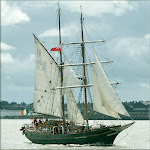

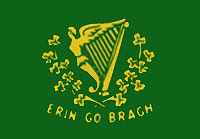




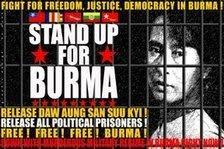
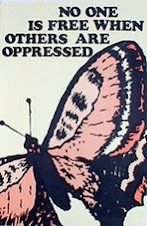






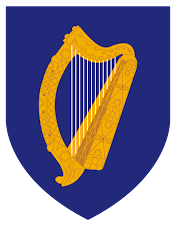

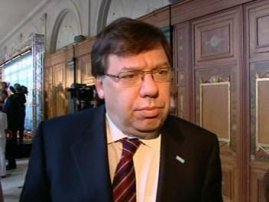




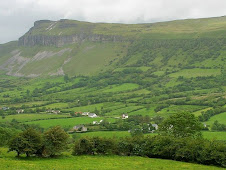
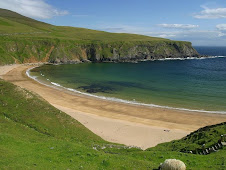













1 comment:
It is very instructive to learn that when the rest of the world dithered about Hitler and his obvious anti-semitism, the first serious opposition to him came from Pacelli. This is quite a critical fact - for there were many popular European and Western who vacillated at best and supported Hitler at worst. It would appear that a great injustice is being perpetrated here against Pius XII. He clearly was not neutral about Hitler and the fate of the Jews. He, more than anyone else it would seem, had the gumption to organize the German catholic church to stand up to this man Hitler. What is to be gained by ignoring this apparent fact. Presidents and Prime Ministers pleaded ignorance about the death camps and about what actually went on. While they may have been actually describing the truth, why is it that PiusXII is being selected for special critism in this regard? Did he run better spy services than that of the US? The answer is not clear - except that he was both right about Hitler and he organized to speak out from the pulpit! It would appear that in the circumstances it was a brave though ultimately futile act. The German Bishops should publish their history in this regard. It could bring some welcome light to this tragedy. Jean-Baptiste
Post a Comment